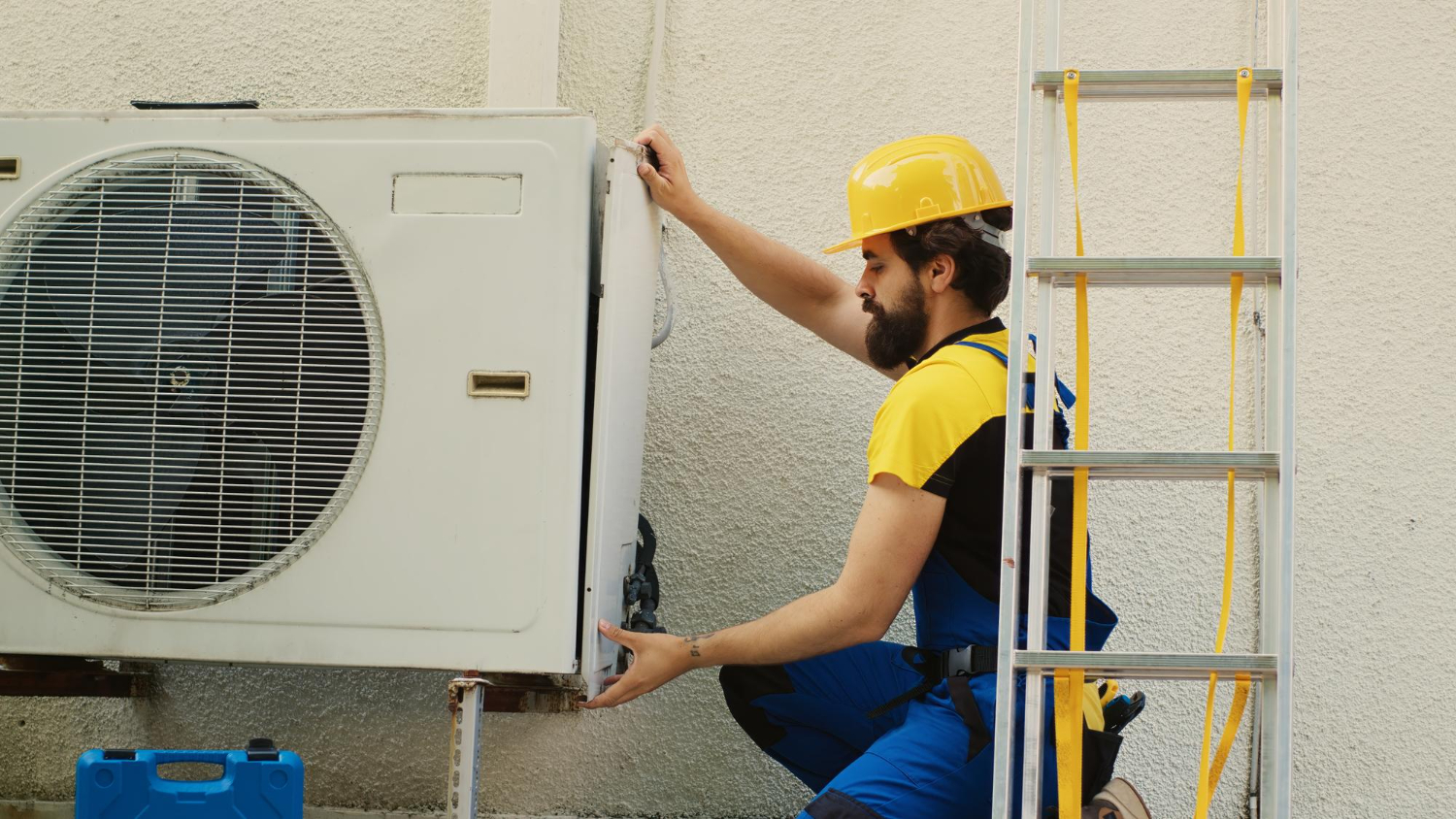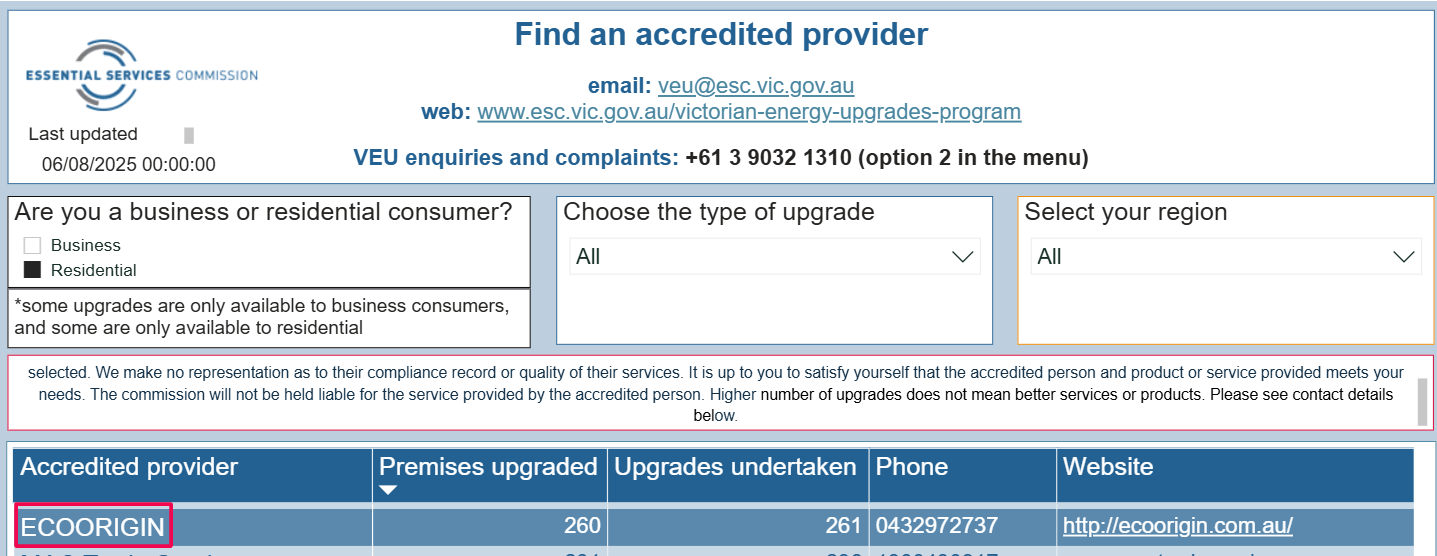Replacing Gas Ducted vs Wall Heater: Which One Gets Heating Rebate in VIC?

Major Benefits
There are two questions we hear all the time:
“If I replace my gas wall heater/space heater with a Multi-split system, will I get a rebate?”
“If I replace my gas ducted heater with a reverse-cycle ducted air conditioner, will I get a rebate?”
It’s a fair question. With power prices rising and gas being phased out, rebates can make a big difference in your upgrade budget. But the truth is that not all upgrades qualify and the rebate amount depends on what you’re replacing and what you install next.
As an accredited provider, it’s our responsibility to clear the confusion, to explain which system qualifies, how much rebate you can expect and what you need to keep in mind.
So this blog will guide you today and tell you about gas ducted heater vs gas wall heaters, which one gets more rebate and clear your confusion about the same.
Table of Contents
- What’s the Difference Between Gas Ducted & Gas Wall Heaters?
- Why Replacing an Old Gas System Gets You the Rebate
- Gas Ducted vs Gas Wall Heater – Which One Gets More Rebate?
- Things To Consider While Switching To An Energy-Efficient Heating & Cooling System
- Heating Rebate Eligibility in Victoria
- How to Claim Your Heating & Cooling Rebate in Victoria
- Conclusion
- FAQs
Before we get into rebates, let’s make sure we’re clear on the basics. In Victoria, homes typically have one of the following:
Gas Ducted Heaters
- Installed in the ceiling or under the floor.
- Push warm air through vents to heat the entire home.
- Use a centralised gas unit.
- Usually paired with a gas water heating system.
Gas Wall Heaters
- Compact units are mounted on the wall, usually in bathrooms or laundry areas.
- Provide hot water, not space heating.
- Often older, low-efficiency models.
- Used in flats, units or older homes with no ducting.
Now here’s the important distinction for rebates:
When the VEU program refers to 'gas ducted heaters’, they’re looking at gas-based water heating systems integrated with whole-house heating, not small wall-mounted water heaters.
So if you’re replacing a gas ducted water heating system with a heat pump hot water system, you’re eligible. You are also eligible for rebate if you are replacing your old electric hot water system with a heat pump hot water heater. Sadly there’s no rebate on gas wall heaters.
Under the Victorian Energy Upgrades program, the government offers rebates for replacing old, inefficient gas heating systems with reverse-cycle air conditioning systems. These systems use heat pump technology, which is far more energy-efficient and environmentally friendly than gas.
Eligible Replacement Options
- Single Split System – Great for replacing a gas wall heater in one room.
- Multi-Split or Ducted Reverse Cycle – Ideal for replacing a whole-home gas ducted system.
An additional benefit of switching to reverse-cycle air conditioning is that your energy bills drastically reduce, as this system is energy efficient.
Here’s where it gets interesting. Rebates are based on the type of system you currently have, the size of the new system. The bigger the energy savings, the higher the rebate — and that’s why gas ducted heaters typically attract more rebate than gas wall heaters.
Indicative amounts only. Actual rebate depends on system size, climate zone and calculations under the VEU program.
Why Gas Ducted System Get More Rebate As Compared to the Gas Wall Heater?
Gas ducted systems heat the entire home and are high gas-consuming units. When these are replaced with an energy-efficient reverse cycle system, the potential energy savings are significant, so the rebate amount is higher. Larger capacity systems also mean more savings, which translates to higher rebates under the VEU program. Factors like the brand, house type and the number of indoor units also influence your out-of-pocket cost.
Gas wall heaters, on the other hand, only heat a single room or a small area. Because they consume less gas, the overall energy savings from switching are smaller, resulting in a lower rebate amount. In most cases, this also means a higher customer co-payment compared to replacing a ducted system.
1. Electrical Capacity
Make sure your switchboard can handle the load of a new reverse cycle system. In older homes, minor upgrades may be needed. For example, if the switchboard is outdated, has no available slots or lacks sufficient capacity, you may need to upgrade it and ensure proper circuit protection based on the system’s load demand.
2. Installation Time & Location
This is where it differs based on what you’re replacing:
- Gas Ducted → Ducted Reverse Cycle or Multi-Split
You’ll need sufficient outdoor space for the condenser unit, which is typically larger for ducted reverse cycle systems.
If you choose a multi-split system, careful planning is required to determine the placement of each indoor unit in the rooms you want heated or cooled. The installer will also plan the piping routes to the outdoor unit.
For a ducted-to-ducted upgrade, the installer may reuse some existing ductwork, but in most cases, the ducts need modifications or a full replacement to meet reverse cycle airflow and zoning requirements.
- Gas Wall Heater → Single Split System
Installation is usually quicker and simpler. You just need an indoor unit mounted on a wall and an outdoor unit in a ventilated spot. It’s much less disruptive than a ducted upgrade.
3. Sound & Operation
Modern reverse cycle systems are relatively quiet but they do produce a humming sound. Placing them away from bedroom windows or neighbours’ boundaries is a smart move.
4. Climate Considerations
Reverse cycle systems are highly efficient in most Victorian weather but some models perform better in colder regions.
You could be eligible for a rebate under the Victorian Energy Upgrades (VEU) program but only if your home or product meets certain criteria.
These criteria are :
1. You Must Replace an Existing Gas Heating System
You get maximum rebates when you replace gas ducted heater or gas wall heater with an energy-efficient air conditioner.
These systems must be permanently decommissioned. The program is designed to reduce gas reliance, so installing a new system in a brand-new home is not eligible under the rebates program.
2. Install an Approved Reverse Cycle System
Not every reverse-cycle air conditioner qualifies. To ensure compliance:
- The new system must be listed on the VEU Product Register.
- Systems are classified by size and efficiency, so choosing an approved product is crucial for getting the rebate.
- Accredited providers like EcoOrigin will guide you through product selection to ensure eligibility.
3. Your Property Must Be at Least 2 Years Old
The rebate is only available for upgrades made to existing buildings, homes that are at least two years old.
If you’ve just moved into a brand-new build or are installing a hot water system for the first time, you won’t qualify under the VEU rebate.
4. You Must Claim the Rebate Through an Accredited Provider
An accredited provider makes sure that you fulfil all the requirements. They help you choose the right product, assess your property, check your documents and so on.
Most importantly, only an accredited provider can claim a rebate for you. So always cross-check if your provider is actually accredited or not.

The process is really simple. You need to follow these steps and claim your Victorian government energy rebate in Australia.
Engage a VEU-Accredited Provider
The very first step is choosing a VEU-accredited provider. Accredited providers ensure:
- The installation meets compliance standards.
- All required documentation is prepared and submitted to the ESC (Essential Services Commission)
Choose an Approved Reverse Cycle Air Conditioner
To qualify for the rebate, the reverse-cycle air conditioner you install must be listed on the VEU product register. This ensures it meets the energy performance standards set by the government.
Using a non-listed product (even if it’s energy efficient) means you won't get any rebate. That’s why choosing the right system matters and why going through an accredited provider ensures you get a compliant model.
If you’re finding it difficult to choose an air conditioner, book a free site assessment with EcoOrigin. As an accredited provider, we do a full site assessment and suggest an eligible energy-efficient air conditioner that’s suitable for your home.
Complete the Installation According to VEU Standards
Once you have chosen the right system, book your installation. The system must be installed by qualified HVAC professionals registered under the VEU program.
Your old unit will be safely decommissioned and the new system will be installed as per compliance.
Rebate Is Applied Instantly
Under the VEU scheme, you do not need to wait for a refund.
The rebate is applied as an upfront discount on your invoice.
However, the program requires a minimum customer contribution, which varies based on the type and size of the system installed:
- $200 (including GST) per product for all non-ducted RCACs under 10kW
- $1,000 (inc. GST) per product for all non-ducted RCACs over 10 kW
- $1,000 (inc. GST) per product for all multi-split and ducted RCACs.
Gas ducted water heater vs wall gas heater: Which one gets more rebate? The Victorian energy rebate is designed to reward the upgrades that deliver the highest energy and emissions reductions. Because gas ducted systems consume more energy overall, replacing them with a high-efficiency reverse cycle system usually attracts a significantly higher rebate than upgrading a gas wall heater.
However, this doesn’t mean wall heater upgrades don’t matter. While they may qualify for smaller incentives, switching from any gas system to an electric reverse cycle unit still brings substantial benefits like lower energy bills and greater comfort, as it provides both heating and cooling.
With an accredited provider like EcoOrigin, the process is easy and stress-free. We take care of everything from checking your eligibility to ensuring you choose an approved system and applying the rebate upfront
1. Can I get a rebate for replacing a gas ducted heating system?
Yes. In fact you get a maximum rebate on replacing your gas ducted heating system with an approved reverse cycle system (ducted or multi-split) under the VEU Program.
2. How much rebate can I get when replacing a gas ducted system?
The rebate amount depends on factors like system size, brand and property type in some cases, you may be eligible for up to $8,000 in total rebates when upgrading to a high-capacity reverse cycle air conditioning system.
3. What systems qualify for the rebate?
Electric reverse cycle air conditioners that are listed on the official VEU Product Register are eligible. Accredited providers like EcoOrigin can help you select the right system that meets all compliance and performance requirements.
4. Can I get rebates for replacing a gas wall heater? & How much?
Yes, replacing a gas wall heater with a split system may also qualify for a rebate. However, the rebate is usually lower than ducted upgrades because wall heaters use less energy. The amount will depend on the capacity and efficiency of the new system you choose.
4. How do I know if my new heating & cooling system qualifies for a rebate?
The best way is to book a free eligibility check with an accredited provider. They’ll assess your current setup and tell you whether you're eligible or not. Additionally, they will suggest a new system that is eligible under the VEU program.
5. Who can install the system so I can get the rebate?
In Victoria, only licensed professionals can install an air conditioning system. To be eligible for a rebate, always check if the professional is certified or not.

